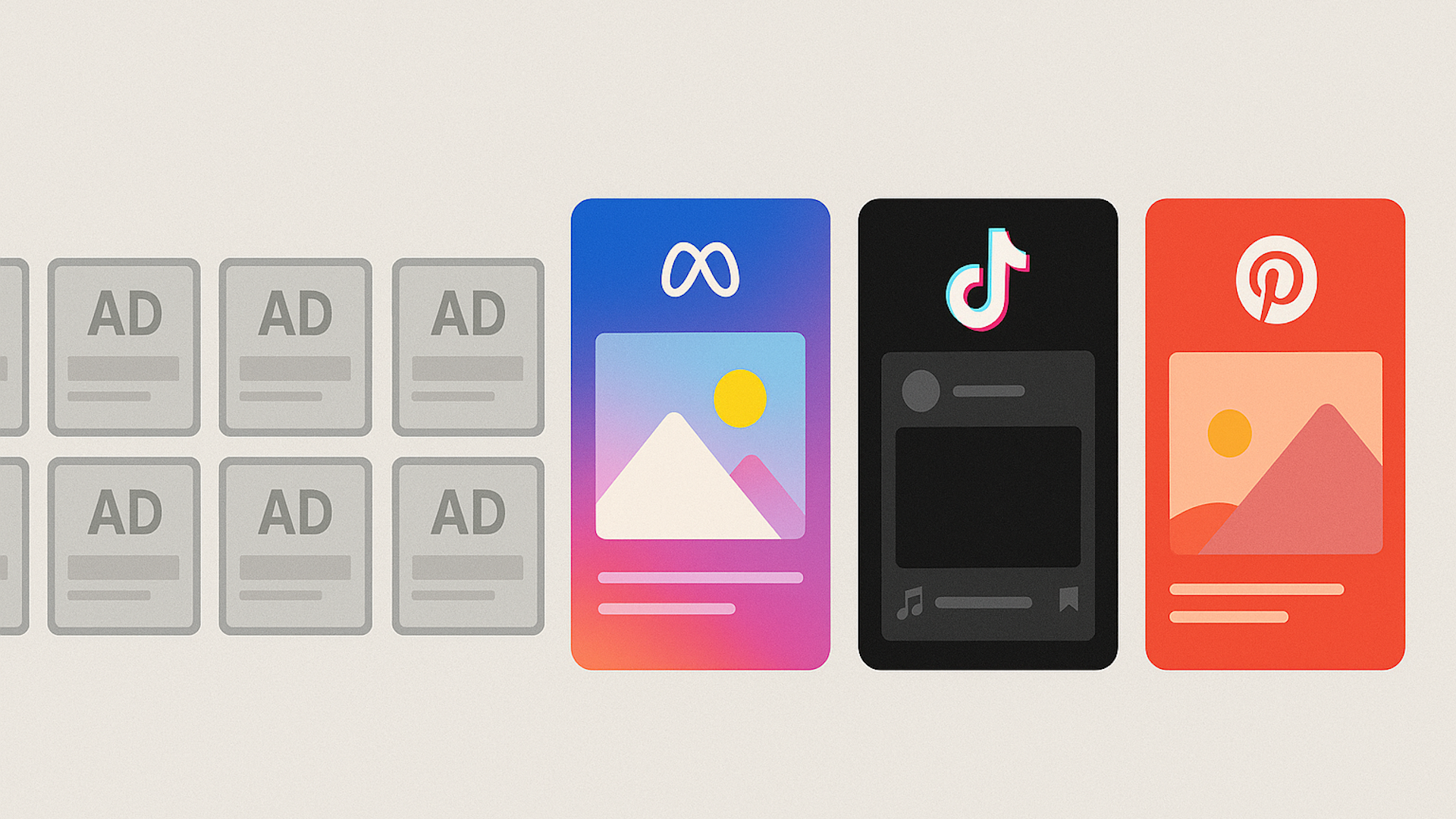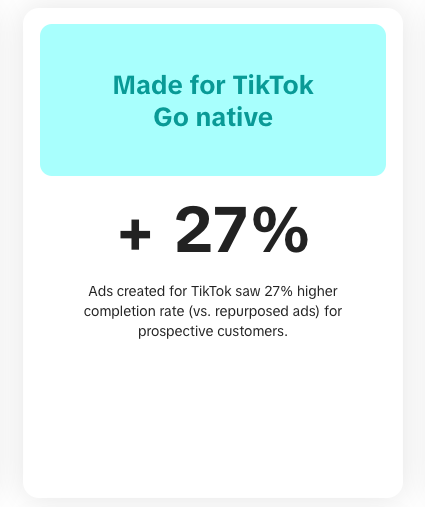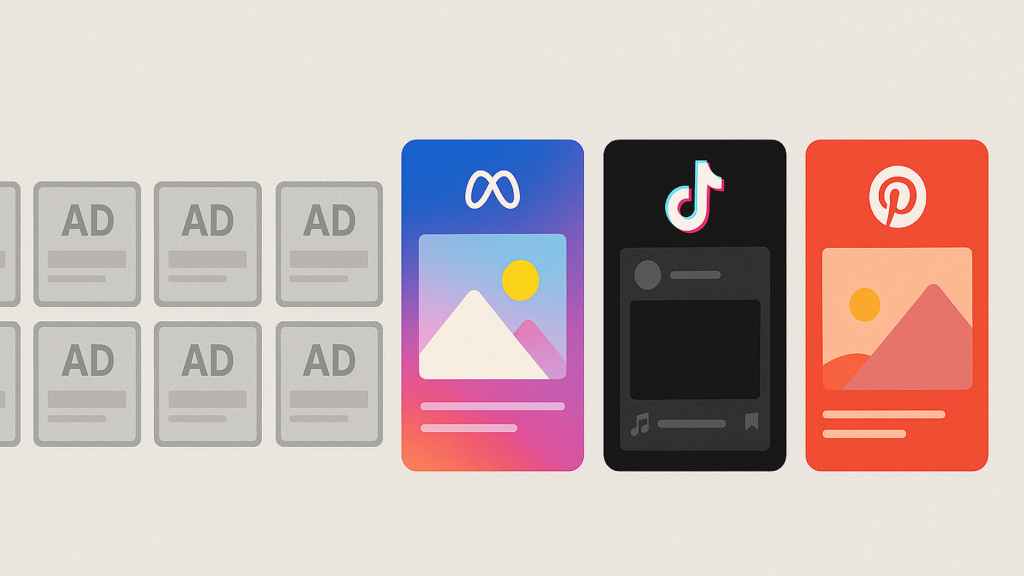Cross-platform, not copy-paste: Smarter Meta, TikTok, and Pinterest ad creative

Repurposing the same creative across Meta, TikTok, and Pinterest Ads may seem efficient, but like many shortcuts, it comes with shortcomings.
Creating original assets for every platform takes time, budget, and creative energy – and most teams are already stretched thin.
Yet what saves time in production can quickly cost in performance.
Each platform has its own personality, shaped by audience behavior and content expectations.
So, what works on Instagram may flop on TikTok, and a beautifully designed Pin may underperform on Meta.
Let’s explore how to adapt creative to each platform so you can drive stronger engagement and, more importantly, meaningful brand interaction.
With a few nuanced adjustments, you can maintain brand consistency without reinventing the wheel – and give your cross-platform campaigns the best chance to succeed from the start.
The cost of copy-paste creative
Many brands reuse the same creatives across platforms to save time or cut costs.
While efficient, this often leads to weaker results because each audience engages differently.
A polished meta carousel that highlights product benefits may feel too formal on TikTok, where content is more casual and fast-paced.
Conversely, a Pin designed for inspirational browsing may underperform on Meta, where brands compete for immediate clicks and stronger calls to action (CTAs).
Platform data consistently shows that native, tailored creative earns stronger engagement and tends to yield better results.
TikTok says that ads created specifically for its platform see about 27% higher completion rates for prospective customers than ads using repurposed creative assets.

Adapt your creative for each platform so you don’t risk your engagement, miss opportunities, and waste ad spend.
Understanding platform-native behavior
To adapt creative effectively, start by understanding how each platform’s audience engages with content and how its algorithm favors certain formats.
Meta Ads
Meta’s ecosystem – most popularly Facebook and Instagram (along with WhatsApp and Threads) – is built for storytelling.
It blends polished, branded content with organic creator-made posts.
Users are accustomed to ads here, so your creative can be more direct without feeling out of place.
- Polished, branded feel with room for creator content.
- Clear value propositions and strong calls to action.
- Multiple placements, each with its own rhythm:
- Feeds: Polished and branded.
- Stories: Quick, captivating visuals.
- Reels: Short-form, trend-driven, more casual in tone.
TikTok Ads
TikTok thrives on authentic, casual, and fast-moving content.
The best-performing ads often don’t feel like ads at all.
Its algorithm prioritizes early engagement, making the first seconds critical for retention.
- Authentic, lo-fi, creator-led content resonates.
- Relatable hooks, trends, and sounds drive attention.
- Overly polished creative can feel out of place.
- Success depends on quick engagement within the first second.
Pinterest Ads
Pinterest is a platform for aspiration and planning, where users arrive with a discovery mindset – looking for ideas, inspiration, and solutions.
Content has a long shelf life, with Pins continuing to generate engagement for months.
- High-quality, vertical creatives with aspirational messaging.
- Clear text overlays that inspire saves, shares, and clicks.
- Strong alignment with seasonal and project-based planning.
- “How to” and “idea” formats fit well with browsing behavior.
Dig deeper: 7 best AI ad creative tools, for beginners to pros
Get the newsletter search marketers rely on.
See terms.
A framework for adapting ad creative across platforms
When adapting creative for multiple platforms, you don’t have to start from scratch.
With a structured approach, you can stay efficient and maintain brand consistency while tailoring assets to each audience.
Start with the core message
Begin every campaign with a clear value proposition or emotional hook.
Speak to the reason why your audience should care by addressing:
- A unique product benefit.
- A time-sensitive offer.
- An exciting product launch.
- A relatable problem that your products or services can solve.
Keep this message consistent across all social ad platforms so that no matter where someone sees your ads, they can recognize and remember you.
Translate the format
Once your core message is set, adapt it to the strengths of each platform.
- Meta
- Stick to clean design with a “less is more” approach so focus isn’t lost on what you’re advertising.
- Use a clear text hierarchy and incorporate storytelling elements to draw viewers in.
- Brand colors and high-quality visuals help build trust.
- TikTok
- Write engaging, even surprising hooks, along with a loose script or outline for a trend-friendly, lo-fi video.
- Team up with creators. Creator-led content often performs best here.
- Pinterest
- Use clear, concise text overlays on vertical creatives.
- Lean into aspirational visuals that encourage people to save, share, and click.
- “How to” and “idea” formats fit naturally with planning behaviors.
Tailor for behavior and intent
Each platform attracts people in different ways, so align your messaging, tone, and CTA accordingly.
- Meta
- In video ads, lead with a strong overlay text and/or spoken hook in the first three seconds.
- Use benefit-driven messaging.
- Close it out with a strong and clear CTA, such as:
- “Learn more.”
- “Sign up.”
- “Shop now.”
- TikTok
- Lead with scroll-stopping hooks in the first second.
- Prioritize entertainment and curiosity instead of blatantly selling.
- Pinterest
- Focus on inspiration and planning content by using language that speaks to people’s future, such as:
- “Your next DIY project.”
- “Plan your holiday table.”
- Focus on inspiration and planning content by using language that speaks to people’s future, such as:
Test, learn, and optimize
Creative adaptation is an ongoing process in paid social. Use A/B testing to validate assumptions about what works on each platform.
Experiment with ad copy, visuals, subtle movements, overlay text, hooks, and formats – while keeping your core message consistent.
Track these platform-relevant KPIs to guide your next iteration:
- Meta
- Thumb-stop rate.
- Click-through rate (CTR)
- Conversions.
- TikTok
- View duration.
- Engagement rate.
- Shares.
- Pinterest
- Saves.
- Outbound clicks.
- Conversions over time, as they can continue to trickle in later.
By implementing this repeatable process, you ensure you’re not just cross-posting content but strategically shaping it to how each platform’s audience engages.
Over time, this approach drives stronger results and maximizes the return on your creative investment.
Dig deeper: Meta unveils generative AI tools for automated video, branding, and creative ads
Maintaining brand consistency without creative cloning
Adapting creative for each platform doesn’t mean abandoning your brand identity.
Keep a consistent voice, style, and core message while adjusting execution to fit each platform. This improves both your platform-specific and overall results.
Done well, your brand remains recognizable even when formats and styles vary.
Set brand guardrails
Define guardrails, such as:
- Tone of voice.
- Color palette.
- Typography.
- Style.
Make these accessible to anyone involved in creative and content.
Also, define where creative freedom is allowed so teams can adjust platform-specific elements.
For example, TikTok may lean humorous and casual, while Pinterest is more aspirational and polished.
Different in tone, but both should still “feel” like your brand.
Use adaptable templates
Adaptable templates or modular design systems can help streamline production.
Build core layouts for:
- Seasonal promotions.
- Testimonials.
- Product showcases.
Then, adjust imagery, dimensions, and copy for each platform’s needs.
Customize for platforms, maintain recognition
When done well, your creative suite varies without sacrificing brand recognition.
For example:
- A Meta carousel with a lifestyle image and CTA.
- A TikTok video featuring a creator in a trending format.
- A Pinterest Pin with vertical hero imagery and inspirational copy.
Different executions, yet all aligned with your brand.
Consistency without cloning
Adapting creative for each platform isn’t just a best practice – it’s a performance driver.
To gain an edge, don’t copy and paste.
Translate your message into each platform’s native format.
Native-looking creative almost always outperforms generic repurposed assets.
When you maintain your identity and voice while respecting platform norms, your brand’s consistency shines through – driving engagement and maximizing ROI on every creative.
Dig deeper: Rethinking Meta Ads AI: Best practices for better results







Recent Comments